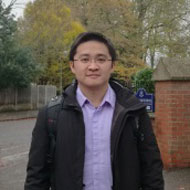


Speech Title: Genetically engineering functional silk fiber for biomedical materials by transgenic silkworm
Abstract: The silk gland (SG) of the silkworm has significant potential for mass production of valuable recombinant proteins due to its convenient synthesis and secretion of silk proteins. In this study, we firstly established an efficient Ser1 based expression system for expression of foreign proteins in silk gland and secretion in to silk fiber. Then, several target genes such as the human growth factors (haFGF), human serum albumin (HSA), and human superoxide dismutase (SOD) were sequence optimized and inserted into the expression system to generate the original transgenic silkworms. Expressions of these genes in the cocoons of the transgenic silkworms were analyzed achieved highly efficient expression in cocoons which accounted for 17-40% of the total extracted cocoon proteins. Yields of foreign proteins were further improved by a PIG jumpstarter mediated remobilization strategy which allows the transgene expression cassette jump to the “safe harbor” locus of the silkworm genome for the efficient expression of the target gene. The bio-functions of these genetically modified silk fiber were analyzed. Mitogenic activity and wound healing assays showed that the r-haFGF protein was bioactive to promote the growth, proliferation and migration of NIH/3T3 cells, which was equivalent to the commercial haFGF standard. Remarkably, the hFGF1 transgenic raw silk also significantly stimulated the cell growth and proliferation of mouse embryonic fibroblast cell (NIH/3T3), suggesting the mitogenic activity of recombinant hFGF1 was well maintained and functioned in the sericin layer of transgenic raw silk and the genetically engineered raw silk could be directly as a fine biomedical material for mass application. In conclusion, silk gland of silkworm combining with the jumpstarter-mediated remobilization could be as an efficient bioreactor strategy for recombinant production of bioactive proteins in the cocoons and the strategy by expression of functional recombinant proteins in the sericin layer of silk might be applicable to create more genetically engineered silks with various bio-functions and applications.
Key words: Silkworm, transgene, bioreactor, biomaterials